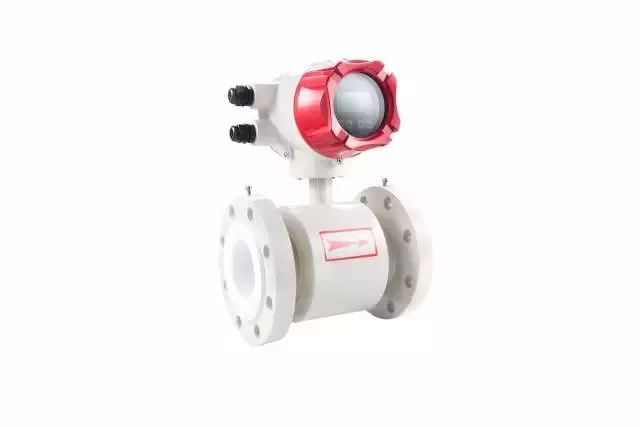Electromagnetic flowmeters are used in a wide range of applications, especially in the environmental protection industry. Large-diameter instruments are mostly used in water supply and drainage projects. Medium and small calibers are often used in solid-liquid double equal unpredictable fluids or in high-demand areas such as pulp, pulp, coal slurry and strong corrosive liquids. Small caliber and small caliber are often used in places with hygienic requirements such as medicine, food, and bioengineering. Electromagnetic flowmeters should be considered from the following aspects when applied.
Caliber and range selectionThe flowmeter's range can be selected based on the principle of not lower than the expected maximum flow value. The normal flow rate can preferably exceed 50% of the full-scale flow. This allows for higher measurement accuracy.

The diameter selection of the flowmeter is usually the same as or slightly smaller than the inner diameter of the process pipe, and should be determined by combining different measurement objects, the flow velocity in the measurement pipe, and the like. The flow rate of the liquid and pipeline with low viscosity such as water in the process industry is generally 1.5-3m/s, and the diameter of the selected flowmeter is the same as the diameter of the pipe. For some new construction projects, the flow rate is low or the flow rate is low. In terms of measurement accuracy, the gauge diameter should be smaller than the pipe diameter and connected by a reducer. For fluids containing particles and abrasives, such as pulp, the flow rate should be less than 2-3m/s to reduce the wear on the lining and the electrode, but not too low, so as to avoid the signal being too small or the formation of particulate matter in the horizontal pipeline. Asymmetry in flow velocity distribution. For fluids that are easy to settle, adhere, and foul, the flow rate is usually not less than 2 m/s. It is better to increase it to 3-4 m/s or more, and it functions as self-cleaning and adhesion deposition.
Liquid conductivityThe premise of using an electromagnetic flowmeter is that the liquid to be tested must be electrically conductive and the conductivity cannot be below the threshold. The general-purpose electromagnetic flowmeter is also used depending on the length of the signal line between the transmitter and the converter and its distributed capacitance. The length of the signal line corresponding to the conductivity is usually specified in the manufacturer's instruction manual. Depending on the experience of use, the actual conductivity of the liquid is preferably at least an order of magnitude greater than the threshold specified by the instrument manufacturer. Because the lower limit specified by the manufacturer's instrument specification is the lowest value measured under various conditions of good use, it is limited by some use conditions, such as conductivity uniformity, connected signal line, external noise, etc., otherwise output sloshing may occur. phenomenon.
Component material in contact with fluidMeasuring tubes, electrodes, grounding rings and gaskets made of lining or insulating material in contact with the fluid, the material's corrosion resistance, wear resistance and upper temperature limit affect the instrument's adaptability to fluids. Due to the small number of components, simple shape and flexible material selection, the electromagnetic flow transmitter has strong adaptability to fluids.
The lining must be electrically insulating. Since it is in direct contact with the measured medium, it must be considered comprehensively based on the physical and chemical properties of the medium. Fluorine plastics commonly used as lining materials include polytetrafluoroethylene, perfluoroethylene propylene, polyurethane rubber, urethane rubber, neoprene, fiberglass and ceramics. Neoprene and FRP are used for non-corrosive or weakly corrosive liquids; polyurethane rubber has excellent wear resistance, but acid and alkali resistance is poor; alumina ceramics have excellent wear resistance. And corrosion resistance to strong acids and bases. The electrode is made of a non-magnetic material. The selection is mainly based on the corrosiveness of the medium, and secondly, whether surface effects such as passivation and noise formed are generated. At present, for most of the general fluids, acid-resistant steel and keyed stainless steel are used for strong corrosive media, and Hastelloy, Chinite, platinum-rhodium alloy or acid-resistant steel is used to coat gold.

The electrode structure can also be selected differently depending on the flowmeter diameter, pressure resistance requirements and dielectric properties. For medium-diameter and pressure-resistant inserts, it is suitable for extra-insertion with small diameter and high withstand voltage, for measuring the tip type of adhesion and scaling medium, and for the inverted cone structure used when the wear is particularly serious. . The most severe conditions can also be considered for the overall sintered structure of the platinum electrode and the cermet lining.
The grounding ring is attached to both ends of the flow transmitter of the plastic pipe or the insulated liner metal pipe. The grounding ring should be grounded separately and well, so that the fluid in the pipe is electrically connected to the ground and has zero potential, otherwise the flowmeter will not work properly. A grounding ring is not required if the metal process pipe is in direct contact with the fluid. The material of the grounding ring should be determined according to the corrosiveness of the medium, generally containing molybdenum stainless steel; for highly corrosive liquid, it can be selected with reference to the selected electrode material or a lower level.
Suizhou simi intelligent technology development co., LTD , https://www.msmvape.com
